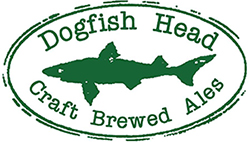
Increasing sales in the craft beer industry requires honesty, goal-setting, an unwavering commitment to “the grind,” and feet on the street, according to three veteran sales executives who presented to brewers at last week’s Craft Brewers Conference in Denver, Colo.
The panelists — Sierra Nevada’s director of Eastern U.S. Sales, Tommy Gannon, Dogfish Head’s vice president of sales, Adam Lambert and No-Li Brewhouse partner, John Bryant — stressed the importance of building strong wholesaler relationships and provided attendees with strategies for creating successful marketing plans and managing a rapidly-growing business.
And while Gannon, Lambert and Bryant all believe that the foundation for a long lasting and partnership with distributors begins with empathy, it doesn’t guarantee success. To begin growing sales with a new wholesaler, it begins with honesty.
“We as suppliers have to be honest with them on what we’re going to do in their market,” Gannon noted while discussing investment promises with wholesalers. “This is the time to make it clear.”
Lambert elaborated, explaining how Dogfish Head recently restructured its own contracts with distributors.
“Now the business planning process is a written agreement between us and the wholesaler,” he said. “Moving that whole process over into an assigned piece of paper is critical.”
Having a clear understanding of the goals and objectives will help maturing craft brewers as they begin moving into national chain accounts, the group said.

“The grind is truly loving to get up early in the morning and be the grocery store,” he said. “If you don’t love doing that, don’t be in chains because you really need to be in those stores with a fresh cup of coffee and be aware to understand brand flow.”
But beyond having an appreciation for “the grind,” craft brewers must bring value to any retailer, Bryant said.
“What is the value that you are bringing to that chain that is above the value that is to the left or right of you in this room?” he asked. “There is only so much space. Chances are if you go in, someone else is going out.”
Bringing value to retailers means constantly servicing the accounts, shaking hands with store managers and understanding if your brand fits — all part of the grind, Bryant said.
“Set some very specific goals for the types of sales velocity you need to earn your way into a big, corporate chain,” Bryant said.
So what are those large retailers looking for?
“National accounts are a lot like our distributor partners,” Lambert said. “They want clear expectations, they want concise presentations and information from us that makes sense. The buyers of today are a lot smarter than they were many years ago.”

“We owe them a level of professionalism because we are representing our category and our segment,” said Lambert. “Sitting down and having business reviews with these buyers is critical.”
And once craft brewers finally penetrate those national accounts, building budgets that will fund the kind of investment needed to support growing sales is critical, the panelists said.
“What does it cost me to sell beer?” Lambert asked. “We know how much it costs to make beer, but we don’t spend enough time doing is figuring out how much it costs to sell beer or what we want to spend on selling beer.”
Selling more beer means placing more feet on the street.
“We had a bravado moment at the end of the year last year,” said Lambert, noting that Dogfish sold more than 200,000 barrels of beer with just 11 sales representatives. “We thought we were superheroes. My guys came in at the beginning of this year and said, ‘Adam, we are getting our asses kicked out there.’”
Dogfish had to take a step back and reassess how it was spending money, he said.
“We just put $48 million into our facility to make some of the best beer in the world but yet we got X amounts of dollars on regional managers who are getting their butts kicked.”
That’s why Dogfish vowed to double its sales force before the end of the year.
“We need to spend the money on more bodies out there to help us sell more beer,” he said. “It is just super competitive.”